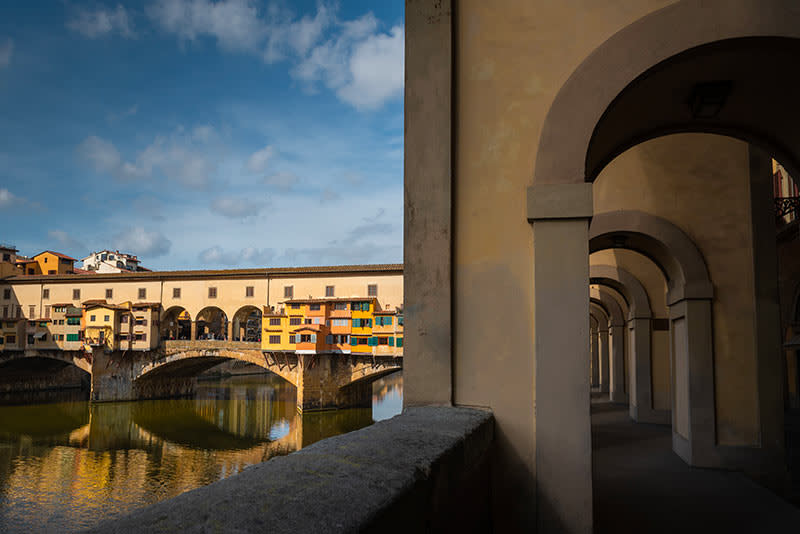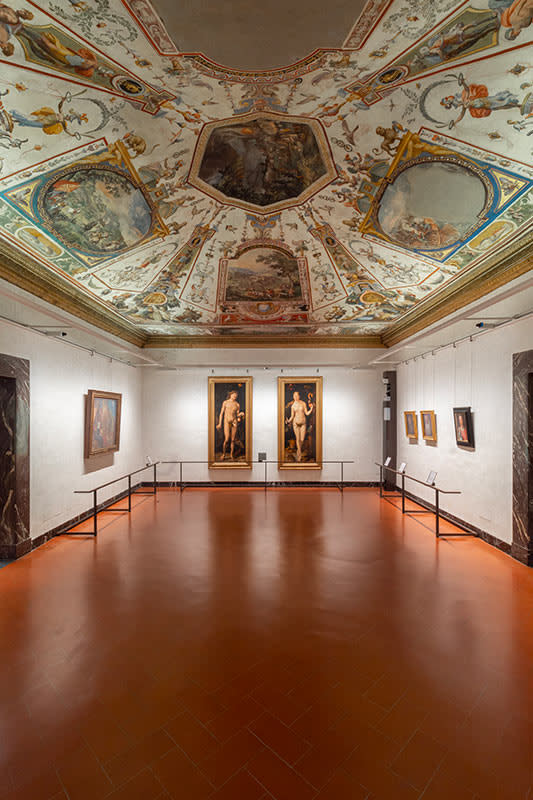Simone Verde shares his vision of the Uffizi
The reopening of the Vasari Corridor and the enhancement of the Palatine Gallery: our interview with the director
Whether it’s the imminent reopening of the Vasari Corridor - the historic route running through the Uffizi and above the Ponte Vecchio, designed by Vasari for the marriage of Grand Duke Francesco - or the new direction of its director, Simone Verde, our meeting in his office overlooking the Arno left us with the impression of a movement, both intellectual and physical, towards Palazzo Pitti and the masterpieces of the Palatine Gallery, a collection he holds dear. Alongside the Roman marble room, restored to its 19th-century arrangement, and the rooms showcasing Flemish masters from the 15th and 16th centuries, which we admired, there is also the recent reopening of the Duchess’s Apartments in Palazzo Pitti this autumn. The collections will be given even more prominence, with the creation of a section dedicated to their history on the ground floor of the Gallery of Statues and Paintings, as well as in the Sala Bianca of Palazzo Pitti.
Additionally, for the first time in the museum’s history, the palace’s storage rooms will be opened to the public, revealing its collection of historical furniture and tapestries. A section will also retrace the history of the Boboli Gardens, and the Bacchus Theatre is set to open as well.
(To discover stories, works and curiosities about the Uffizi, click here! While here you can find an in-depth look at the Vasari Corridor).
 Simone Verde
Simone VerdeWith the public opening of the Vasari Corridor, the Grandi Uffizi will be realised, creating a single, continuous complex within the Uffizi Galleries. What will the visitor experience?
The reopening is scheduled in the coming months. The corridor will be accessible to all those who purchase a dedicated ticket, with controlled access and a unique exhibition arrangement. There will be numerous daily slots available, selected based on booking priority.
Beyond the undeniable economic impact, how do you explain the significant role that museums play today?
Polish historian Krzysztof Pomian wrote that museums are a strange invention.
Useless yet indispensable, they are a recent creation that seems to have existed since the dawn of time. The truth is that, in our cities, they have replaced the cathedral, the temple, the sanctuary - putting man and his creations at the centre, acting as an outpost of modernity.
From this perspective, as a temple of modernity, what is your vision for the Uffizi?
The Uffizi already have their well-established role, which we can only strengthen. All modern museology is inspired by the Uffizi—the Tribune and the Gallery in general, where humanity is seen as the mediator between God and His creation. This centrality of humankind, later reinterpreted in a secular sense after the French Revolution, embodies the essence of Western museums. The Uffizi were the first to reflect this through their collections.
 Corridoio Vasariano (ph. Pasquale Paradiso)
Corridoio Vasariano (ph. Pasquale Paradiso) Acquisitions are an important chapter. What direction will they take during your tenure?
Acquisitions have enormous scientific value, contributing and documenting ongoing research. Museums should not be places that simply display codified social values, but rather spaces of emancipation, where collections help us understand the nature and cultural mechanisms that define us. In this sense, museums are true instruments of cultural and civil policy, deeply rooted in the critical capacity of research, which acquisitions serve to document.
What is your view on managing the tourist flows that Florence experiences during peak months?
This is, first and foremost, a global phenomenon that we must learn to manage - not as a misfortune, but as an opportunity to convey the principles and mission of our work to the widest possible audience.
 The new rooms of the Flemish Masters
The new rooms of the Flemish MastersIn this context, what could be considered a virtuous cultural policy?
The key, in my opinion, lies in overcoming a certain inclination to promote collections uncritically, avoiding the temptation of self-glorification for the sake of market or tourist reasons. Instead, by adhering to the principles of scientific research, the museum becomes a cultural laboratory, and visitors transform from a faceless crowd into informed citizens.
Which lesser-known works are particularly dear to you, and would you recommend seeing at the Uffizi?
An entire gallery - the Palatine Gallery: the Baroque ‘quadreria’ of the Grand Dukes. It’s a true work of art, where the arrangement itself is a masterpiece composed of masterpieces. A one-of-a-kind treasure and an unmatched European model of its time - just think of the Galerie d’Apollon at the Louvre.
What did you feel the first time you entered here as Director?
A great shiver of responsibility - no euphoria, unfortunately. That’s just the way I am!









